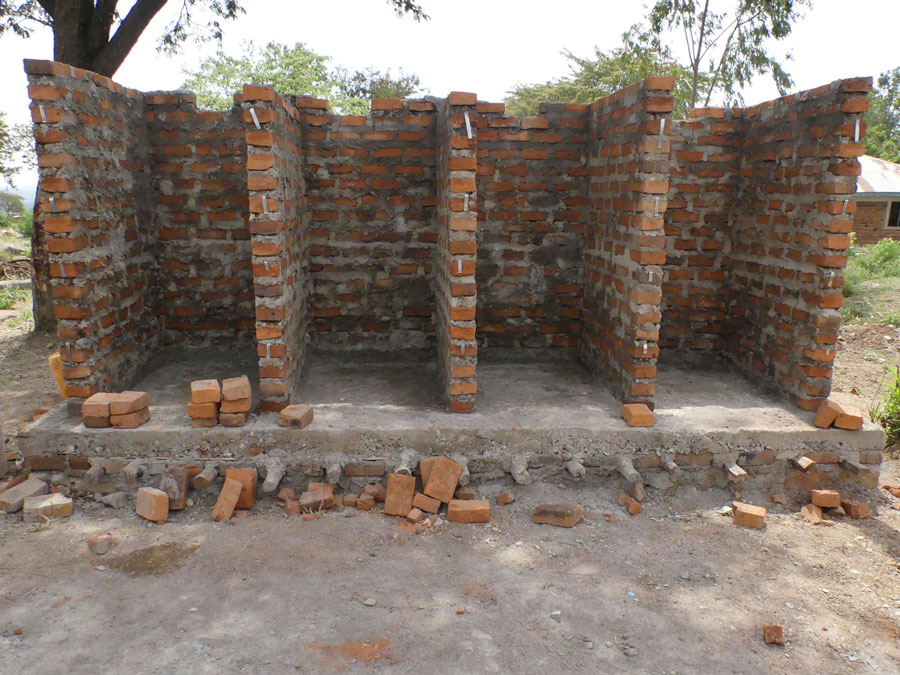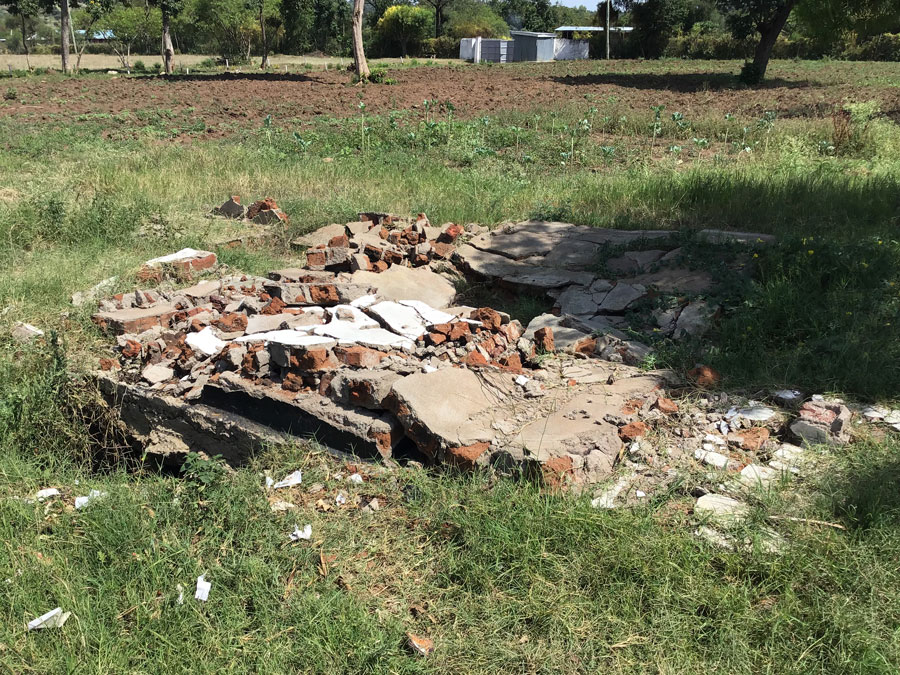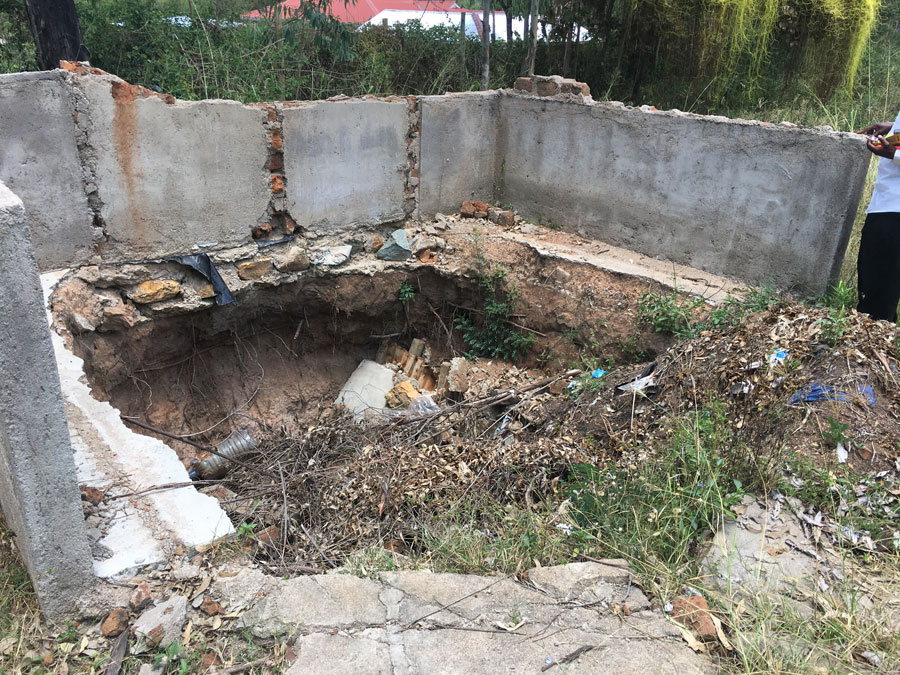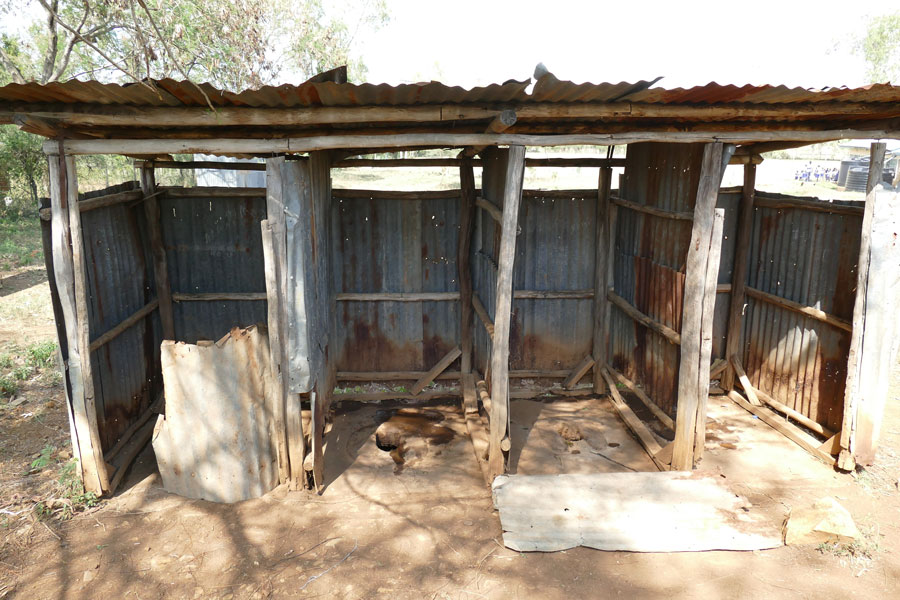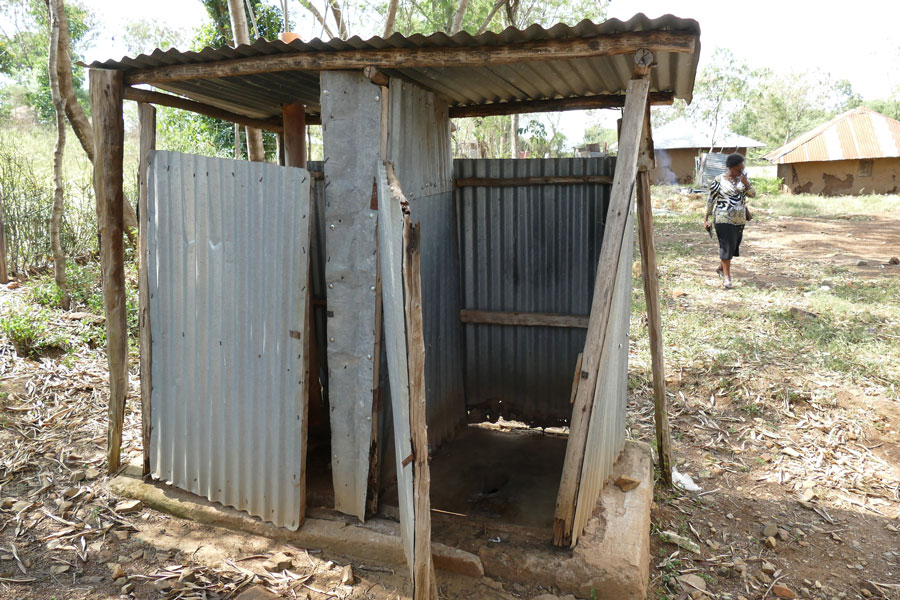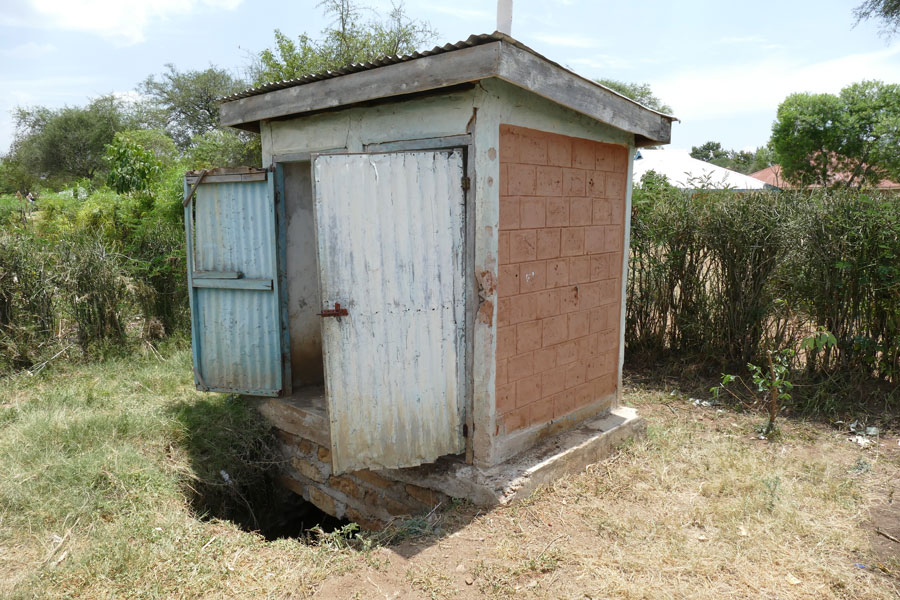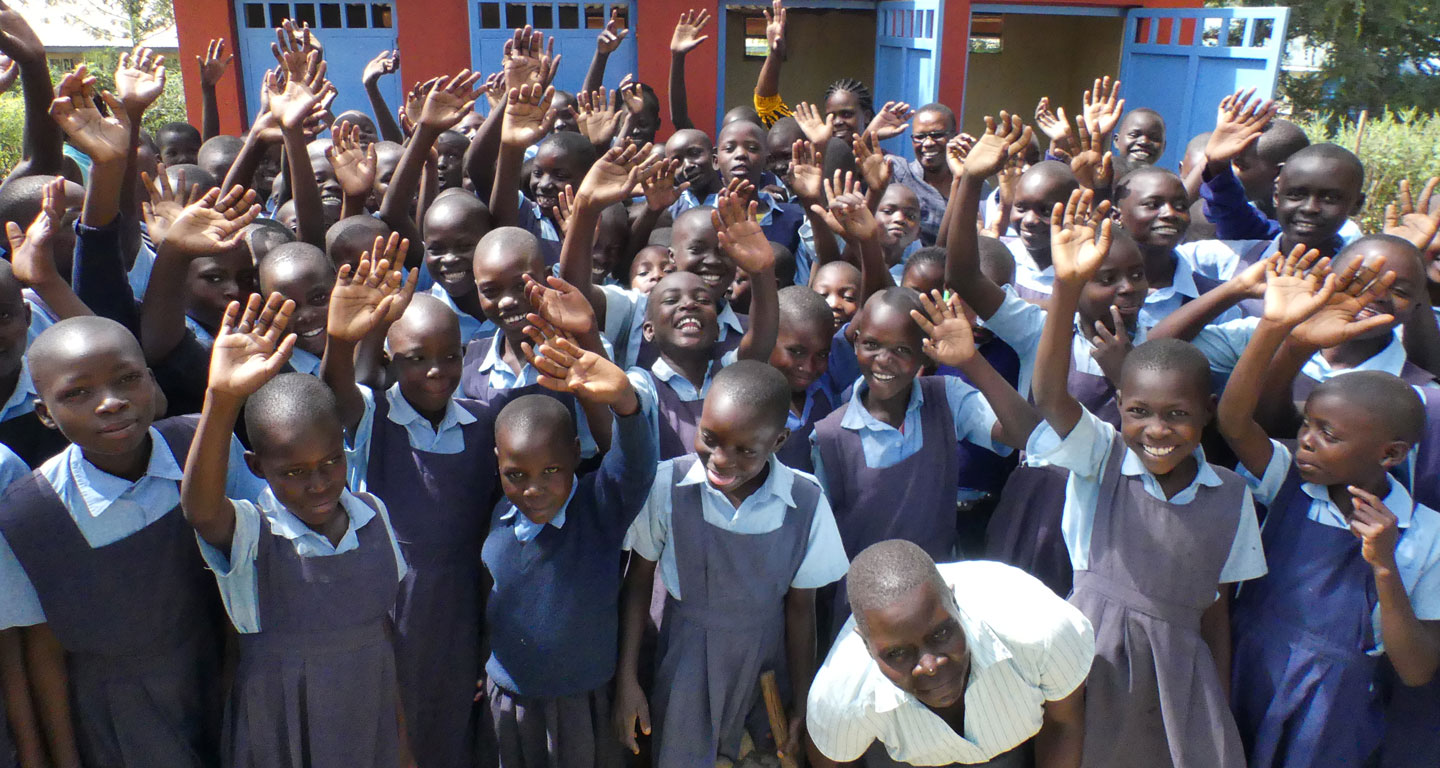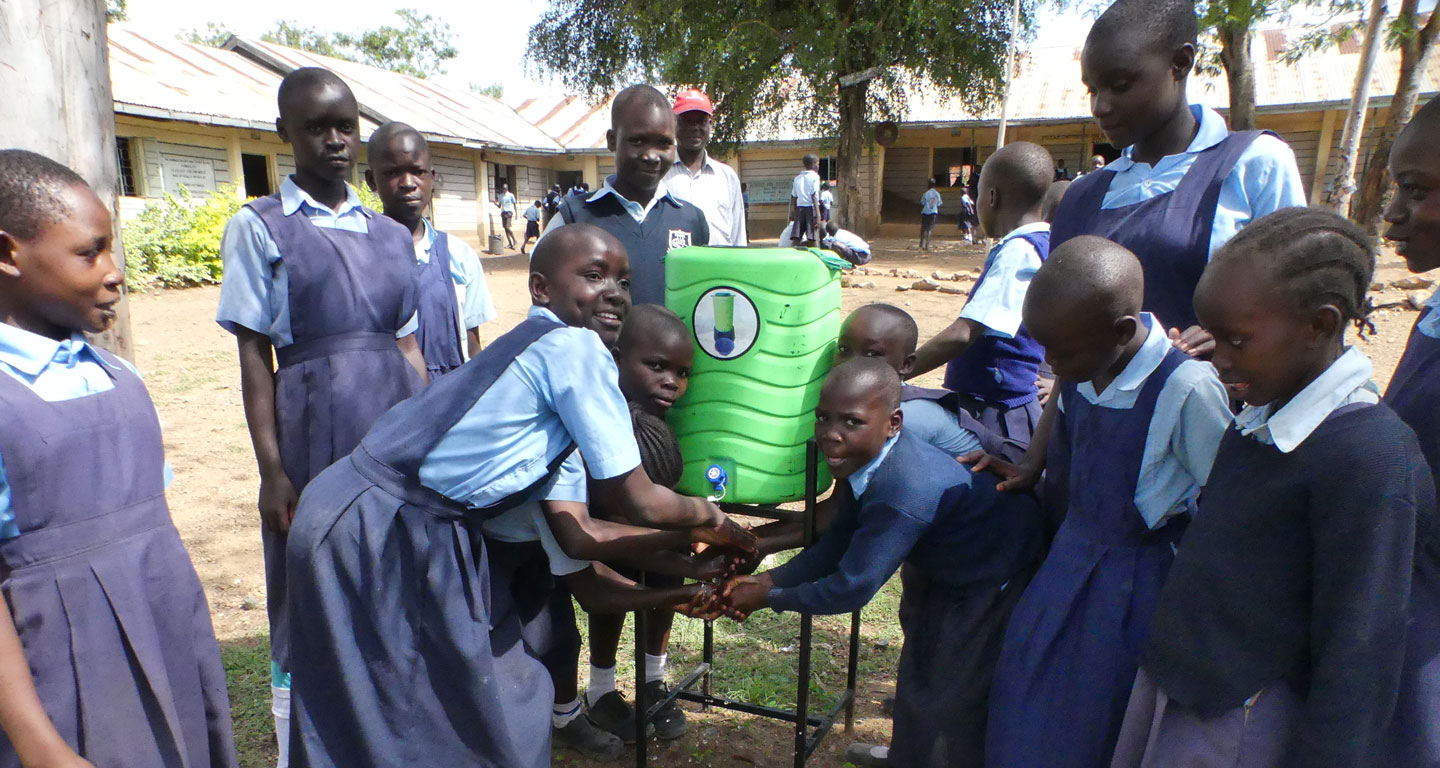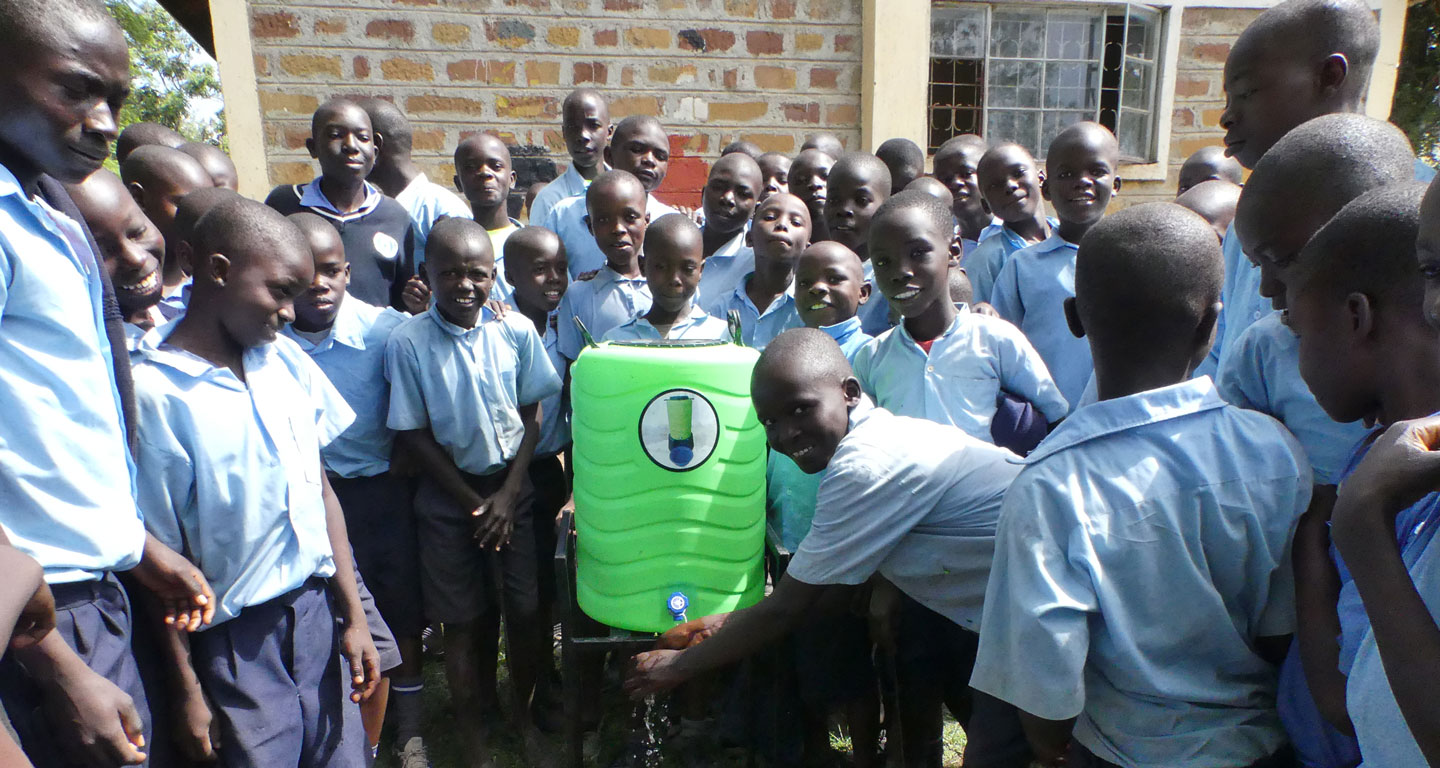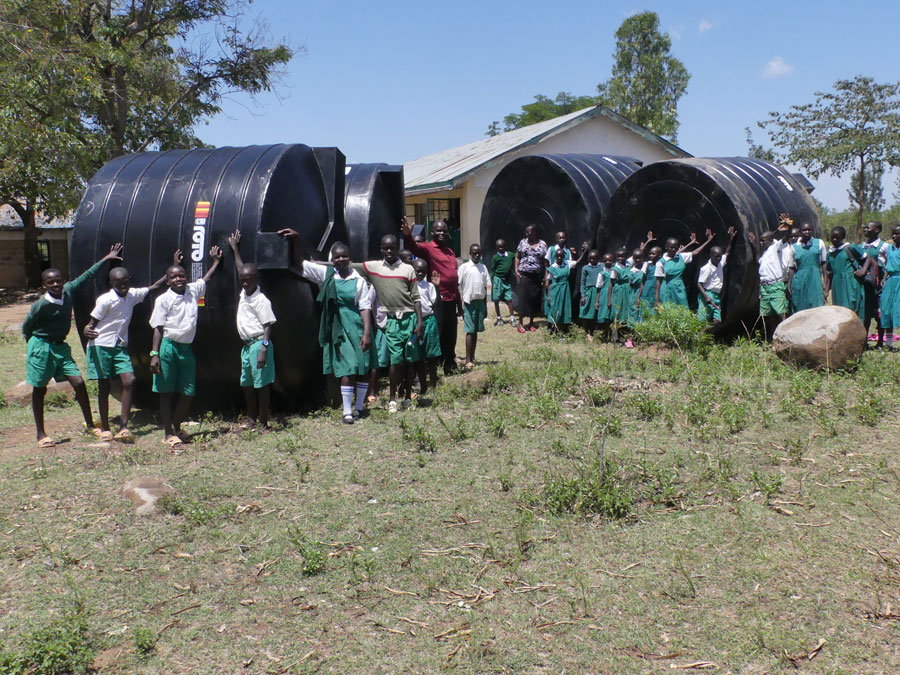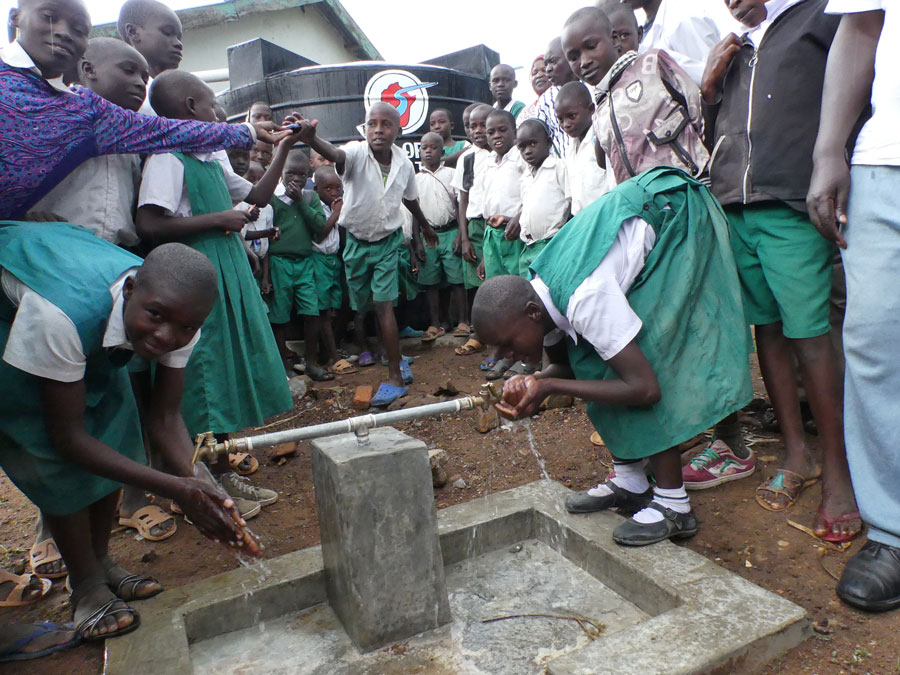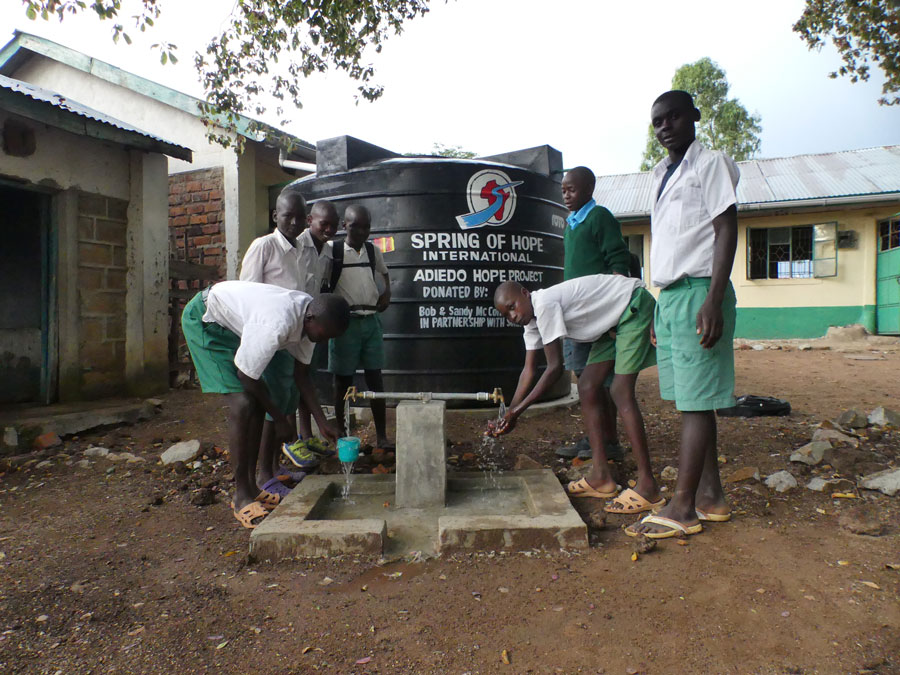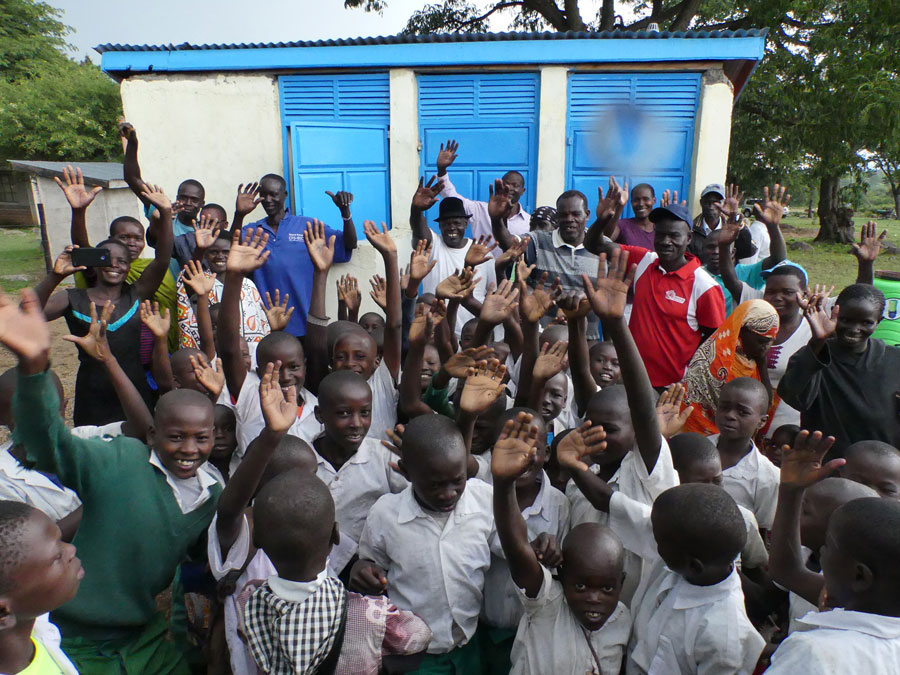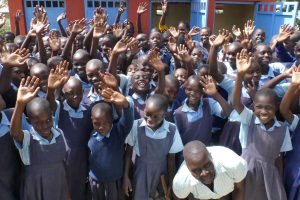I Was Thirsty
Completed Project!
There are currently 41 primary and secondary public schools in SOHI’s area of focus in rural western Kenya educating approximately 15,000 children. Access to clean water and adequate toilet facilities and are elements of day-to-day living that are essential to the physical health, mental acuity, and emotional well-being of the students. Yet sadly, these basic needs that we Americans take for granted are profoundly lacking in rural Kenya.
The “I Was Thirsty…” campaign has provided sustainable, high-quality Clean Water systems, Latrines, and Health & Sanitation training to ALL 41 schools! It’s an example of how God’s people have pulled together to meet a need that is truly saving lives daily through Spring of Hope! But there is still more we can do. Click donate today to make a difference with us!
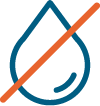
Clean Water
A recent survey shows that 93% of the public schools have a major shortage of clean water for much of the year. This problem exists throughout the year but is particularly egregious during the two extended droughts that happen each year when some boreholes quit producing water and nearby ponds dry up. During the most recent drought (November 2017 – mid-March 2018) the Kenyan Education Committee reported that the problem was reaching catastrophic levels. Boys and girls were having to walk several kilometers in the evenings to find water for the schools. Often, the only water to be found was disease infested brackish water from the few ponds or rivers with a small amount of water remaining.
When this is all that is available, this is what the children drink. As a result, medical clinics are overflowing with sick and dying children. In addition, it is reported that during the walks for water— girls have been preyed upon by men—it is dangerous. Personal trauma and unwanted pregnancies are the result. Women and children are especially desperate for a solution.

Toilet Facilities
Schools do not have a sufficient quantity of water nor are their water resources pressurized to support first-world flush-type toilets. Thus, schools utilize outhouses (called latrines) to address this need. Having an adequate number of latrines at schools is critical to sanitation and health.
Disease is easily spread by fecal contamination through overused/failing latrines and the use of “the great outdoors”.
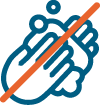
Health and Sanitation Training
A third, and similarly critical, problem is a lack of health and sanitation training for students. The assessment shows that 88% of schools do not have the resources or expertise to provide this training. Diseases including (but not limited to) malaria, cholera, HIV/AIDs, dysentery, and yellow fever are common in the region. Outbreaks of these diseases, in epidemic proportion, often spread through the area causing sickness and death impacting families and school children.
A firsthand account from principal Thomas, from Rongo Primary School: shortly after SOHI provided basic health and sanitation training to his students a cholera epidemic spread through the area. Almost miraculously, his school was essentially bypassed by this malady. The difference sanitation training makes is dramatic.
The Solution
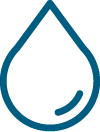
Clean Water
The most cost-effective and achievable solution to the clean water deficiency in schools is to collect rain from the school building roofs in gutters and routing it to storage tanks. These rain catchment systems provide year-round safe, clean water if collection is done properly and tanks are kept sanitary. The cost of rain catchment is a fraction of the cost of drilling a well at each school; thus, is achievable. Thanks be to God and generous sponsors, SOHI has provided rain catchment systems – a sustainable solution that will last for 20 or more years and this is all owned and maintained by the community!

Toilet Facilities
The solution to the shortage of latrines is to provide new latrines for girls and boys at each school. 280 latrines with doors have been constructed! Properly constructed latrines last for over 20 years and their useful lives can be extended indefinitely by maintenance performed with local resources.
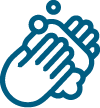
Health and Sanitation Training
The solution to a lack of health & sanitation training for students is simple and inexpensive. A local nursing school provides health and sanitation training for the community at low cost. Two to three teachers or administrators from each school have been trained to teach basic health and sanitation at seminars sponsored by SOHI. Knowledge and training materials equip them to add this training to the student’s school curriculum. The students, naturally, carry this knowledge into their homes sharing it with their families and benefiting the community. Again, a sustainable solution.
Funding Needs
The campaign is called “I was thirsty…”
(See Matthew 25:35)
The I Was Thirsty Campaign saw God’s people raise $380,000 in a one-time campaign. While this campaign has been a success, the need for assistance in the region continues to be a focus of SOHI. Please consider giving to help us continue to share God’s love in very tangible, sustainable, and effective ways.
Updates
Here’s the latest developments from the “I Was Thirsty” campaign.
Campaign Progress – March 2019
In July 2018, SOHI began raising funds for the “I Was Thirsty…” campaign. a sustainable …

